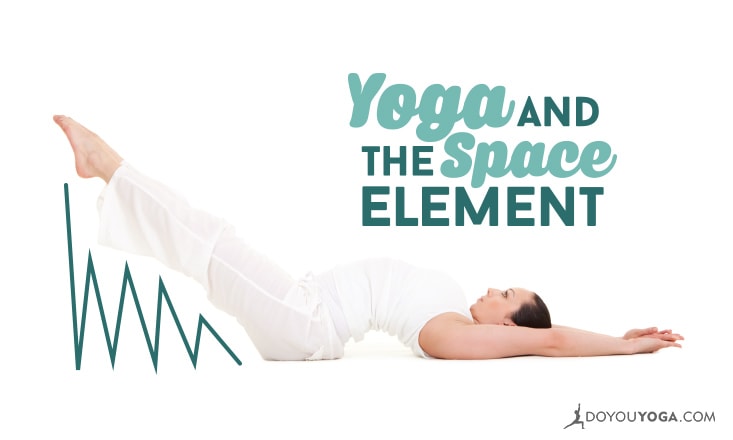Have you ever felt like you couldn’t take a truly deep breath? Or like you just didn’t have any more room in your heart for someone else’s experience?
It could be that you were suffering from a lack of sufficient space element.
Ayurveda and Space Element
According to Ayurveda, space element (sometimes called ether) is the place where everything happens. In its most subtle form, it is the place before everything happens.
 Space element yantra by Susan Fauman
Space element yantra by Susan FaumanThe qualities of space are a reflection of that. It is still because it lacks the movement of wind. It is cold because it lacks the heat of fire. It is dry because it lacks the moistness of water, and it is light because it lacks the weight of earth. It is the place that is nowhere, and so it is expansive, pervasive, and has no center.
Like I said, subtle.
Expansive space element has no preferences and can host everything just as it is.
This helps you stay accepting, flexible, and open-minded. Changes and challenges pass with a natural ease because you’re not holding too tightly to the way you would like things to be.
But, there can also be too much distorted space. When you start to feel detached instead of just open, space has gotten in your way. When you seek only practices, substances, and people which make you feel “blissed out,” space has gotten a bit twisted.
Healthy space element can host the painful and the pleasurable without trying to avoid discomfort.
Yoga and Space Element
In a sense, you are connecting with space element every time you take a breath. In a yoga posture, that sense of reaching into (and beyond) the boundaries of your physical body, unites you with space element.
But just as with earth, water, fire, and wind, there are a few postures which really evoke a sense of space.
Any Seated Meditation Posture
 Credit: Susan Fauman
Credit: Susan FaumanSeated meditation in its purest form could be said to be a contemplation of space. Sometimes in yoga we talk about the dance or romance of Shiva and Shakti.
We could say that Shiva — sometimes referred to as the divine consciousness — encompasses the qualities of spaciousness, stillness, and hosting.
Shakti — sometimes referred to as the divine energy — embodies the qualities of movement, transformation and the filling of space.
From that perspective, simple seated meditation can be thought of as a practice which emphasizes an experience of the Shiva half of that relationship (although without Shakti there too, it feels empty).
If you don’t already have a meditation practice, try this:
Sit in any comfortable position (even on a chair), where you can keep your spine tall and erect. Notice the sensation of the floor or chair beneath your sitz bones. Deepen your breath and drop your inhalation into your belly so that when you inhale, your belly and sides expand, and as you exhale, your navel pulls back towards your spine.
Concentrate on staying with your breath as it moves in and out of your body. Don’t worry about your thoughts, they will do their thought thing. You just stay with your breath. Start with just five minutes and see how you feel afterwards.
Are you more calm? Do you feel more clear-minded?
Corpse Pose (Savasana)

A good Savasana allows the benefits of your practice to come to fruition and rectifies areas where you may have overstrained or misused a joint.
How to Practice Savasana
Lie down flat on your back and close your eyes. Wiggle your hips a bit side to side, and move your arms and legs around for a few moments until you find a comfortable position. Usually that means your legs are about 12”-18” apart and your arms are away from the sides of your body.
Lengthen the back of your neck and turn your palms up to face the ceiling and then lay still. Take a few deep, full breaths into your belly, letting them out with a sigh. And then let go.
Push nothing away and grasp at nothing. Be with everything just as it is. Let your thoughts arise and pass away without interfering with them at all. Just host your experience without judgment or evaluation.
Try for at least 10 minutes of Savasana — although longer is great if you have the time.
Bringing more space into your life means less friction and more room to breathe. What ways do you bring space into your experience?


